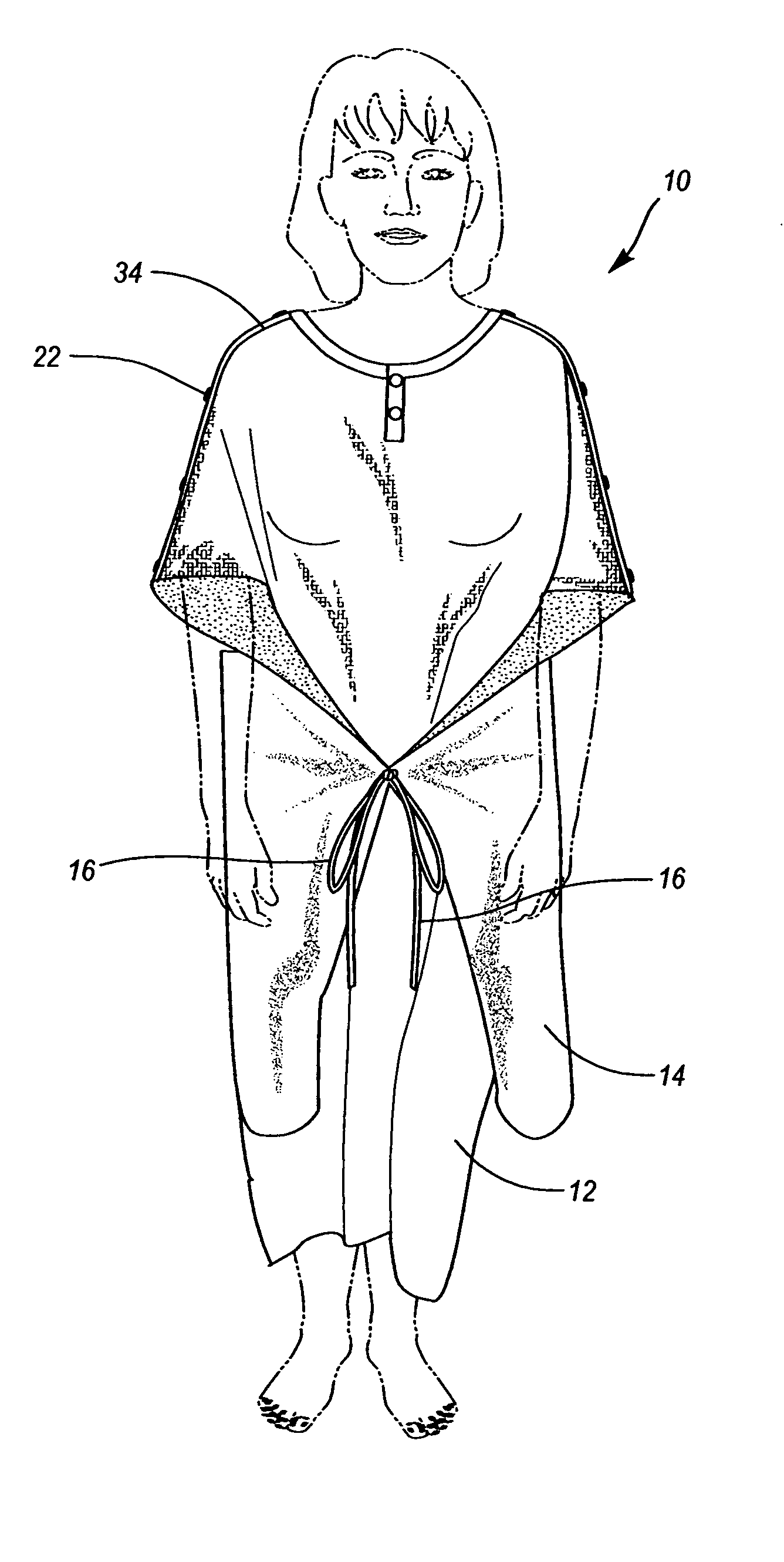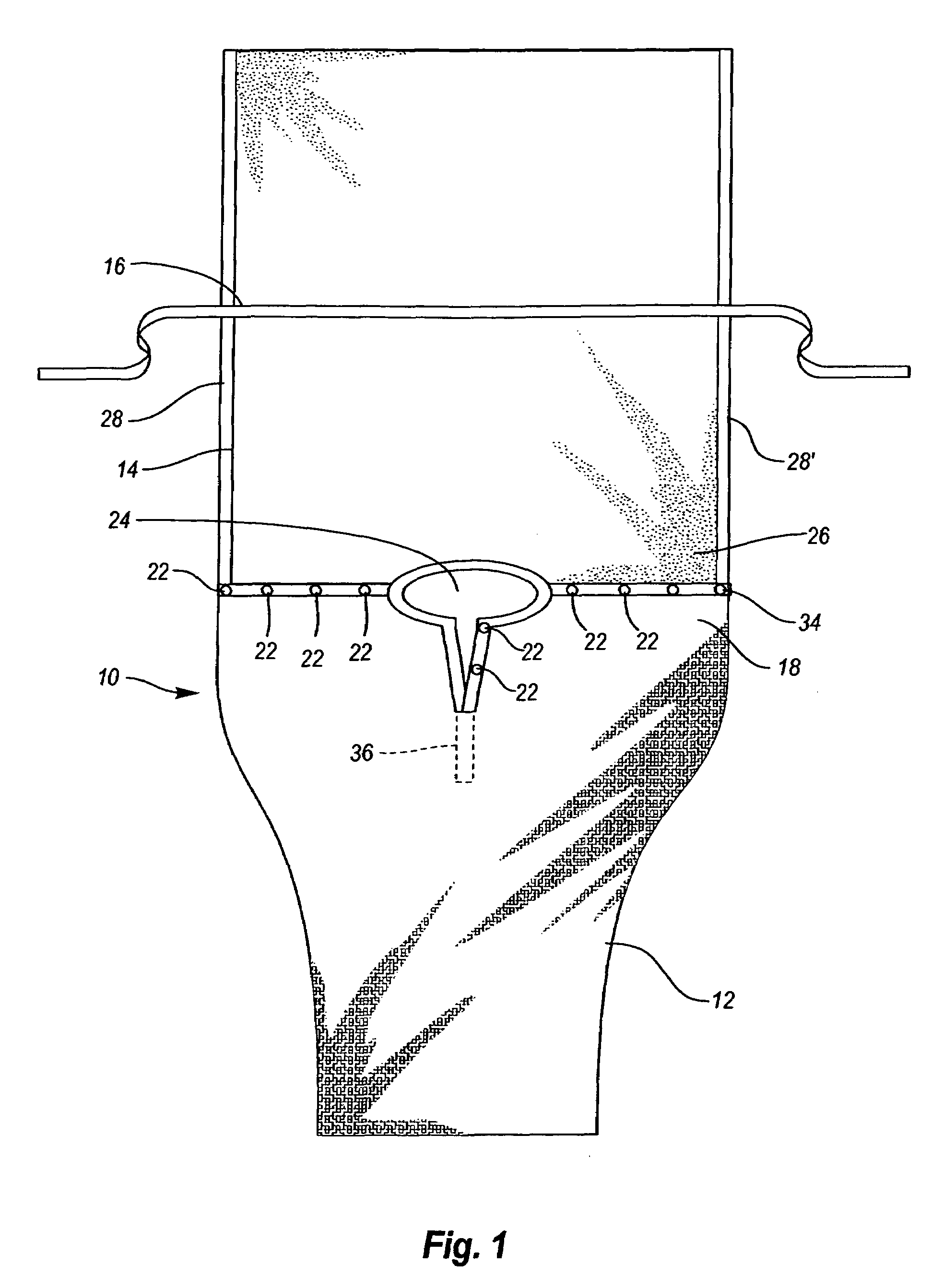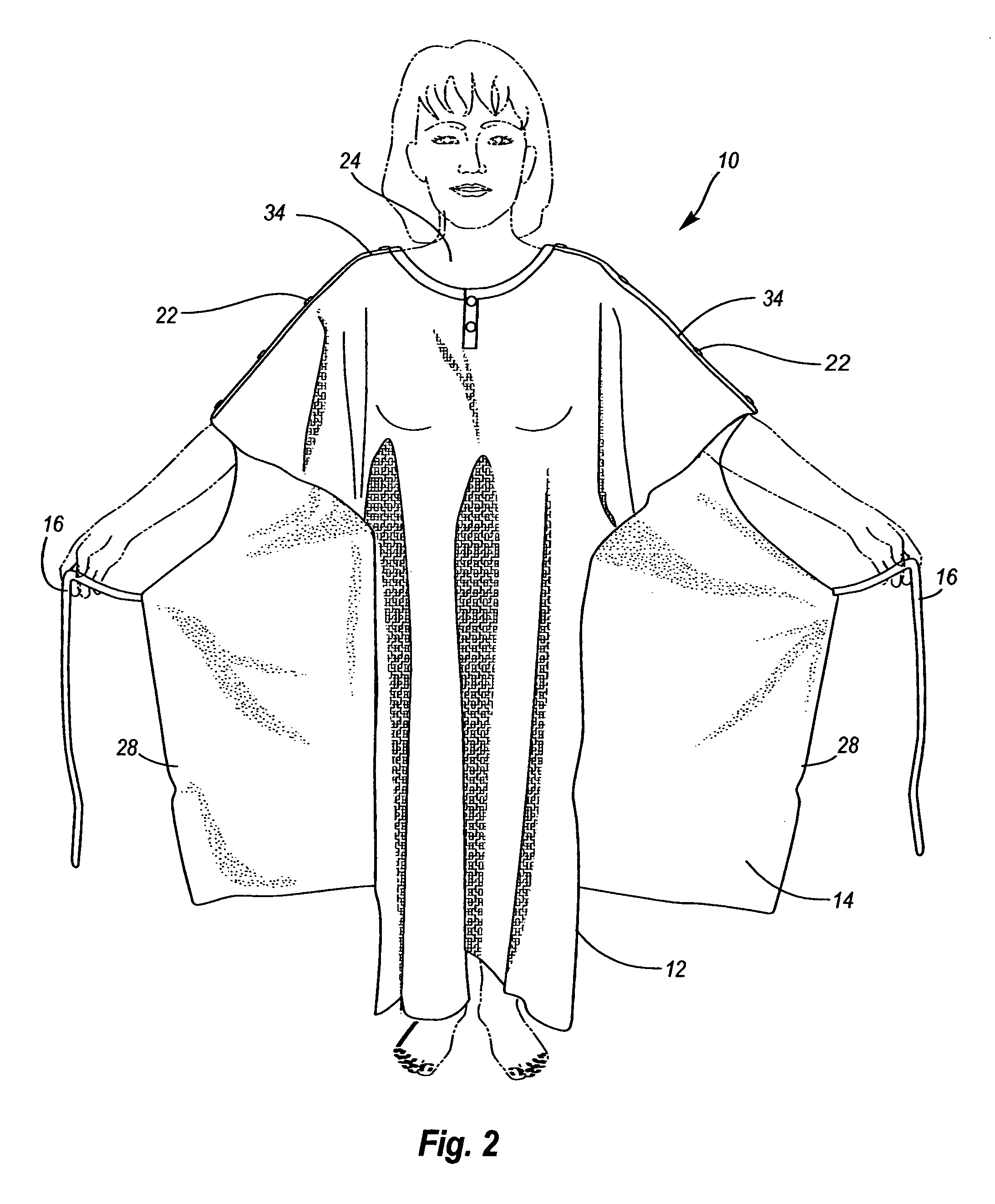Hospital gown with enhanced privacy features
a technology of privacy features and hospital gowns, applied in the field of hospital gowns, can solve the problems of limiting the privacy or warmth of the wearer, affecting the comfort of the wearer, and causing the wearer to be not only embarrassed but cold, so as to enhance the convenience of the present invention, prevent unwanted exposure, and enhance the privacy and convenience of the user
- Summary
- Abstract
- Description
- Claims
- Application Information
AI Technical Summary
Benefits of technology
Problems solved by technology
Method used
Image
Examples
Embodiment Construction
[0034]While the invention is susceptible of various modifications and alternative constructions, certain illustrated embodiments thereof have been shown in the drawings and will be described below in detail. It should be understood, however, that there is no intention to limit the invention to the specific form disclosed, but, on the contrary, the invention is to cover all modifications, alternative constructions, and equivalents falling within the spirit and scope of the invention as defined in the claims.
[0035]The preferred embodiment of the hospital gown of the present invention is shown in the attached FIGS. 1-8. These drawings show the preferred embodiment of the present invention as well as the use of this invention upon a wearer.
[0036]Referring now to FIG. 1 a top plan view of the present invention is shown. The present invention 10 is a hospital gown made up of a single one piece front panel section 12, that is releasably connected to a single one piece back panel section 14...
PUM
 Login to View More
Login to View More Abstract
Description
Claims
Application Information
 Login to View More
Login to View More - R&D
- Intellectual Property
- Life Sciences
- Materials
- Tech Scout
- Unparalleled Data Quality
- Higher Quality Content
- 60% Fewer Hallucinations
Browse by: Latest US Patents, China's latest patents, Technical Efficacy Thesaurus, Application Domain, Technology Topic, Popular Technical Reports.
© 2025 PatSnap. All rights reserved.Legal|Privacy policy|Modern Slavery Act Transparency Statement|Sitemap|About US| Contact US: help@patsnap.com



